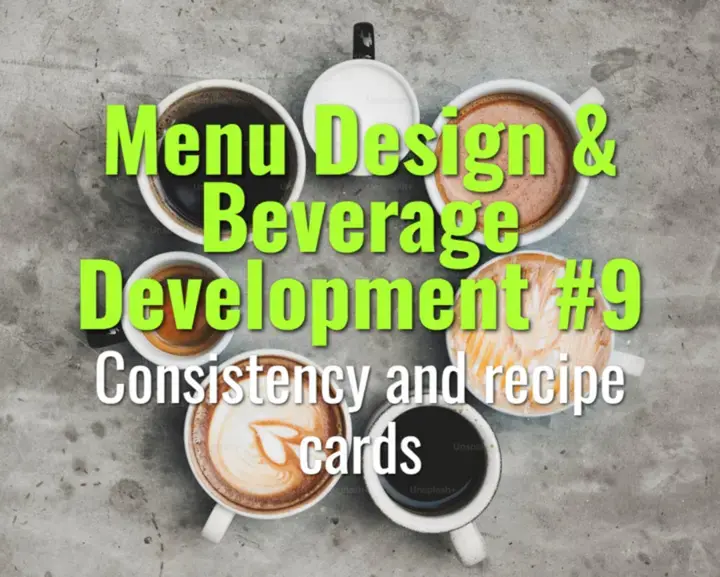Consistency and recipe cards
Why recipe cards are essential for consistency in beverage preparation and how they help maintain quality across baristas and shifts.
- Coffee Basics Nerds
- 2 min read
Article 9 of 12 in Menu Design & Beverage Development/

Importance of Consistency
- Customers expect the same drink experience every time.
- Inconsistent recipes damage trust and brand reputation.
- Recipe cards ensure uniformity across staff, locations, and service times.
Recipe Card Components
- Drink Name & Description: Short, clear identity.
- Ingredients & Ratios: Exact coffee dose, water volume, milk amount, syrups.
- Equipment Notes: Grinder setting, filter type, brew method.
- Steps & Timing: Sequence of preparation with clear instructions.
- Target Sensory Profile: Expected taste, aroma, and mouthfeel.
- Visual Reference: Photo of finished drink for presentation consistency.
Benefits of Recipe Cards
- Training Tool: New staff can learn standardized methods quickly.
- Quality Control: Supervisors can check drinks against documented standards.
- Scalability: Enables consistency when opening multiple café locations.
- Efficiency: Reduces mistakes and speeds up workflow.
Practical Tips
- Keep recipe cards laminated or digital (tablet POS integration).
- Update seasonally or when ingredient sources change.
- Store cards at the barista station for quick reference.
- Include allergen and dietary notes (e.g., contains milk, gluten).
Example (Flat White Recipe Card)
- Dose: 18 g espresso → 36 g yield.
- Milk: 120 ml steamed to 55–60 °C.
- Texture: Silky microfoam with thin layer.
- Visual: Contrast latte art heart.
- Flavor: Sweet, balanced, coffee-forward.
Summary
Recipe cards are a foundation of café professionalism. They provide clarity, repeatability, and accountability, ensuring every barista produces drinks that meet brand standards and deliver consistent customer experiences.